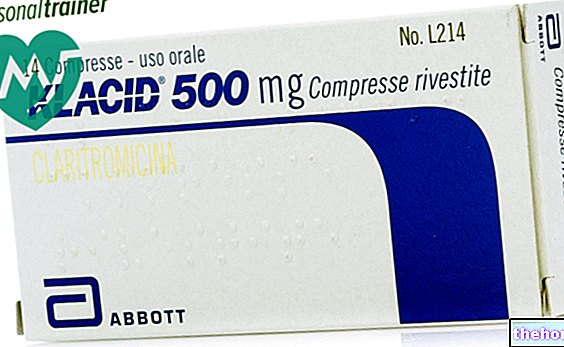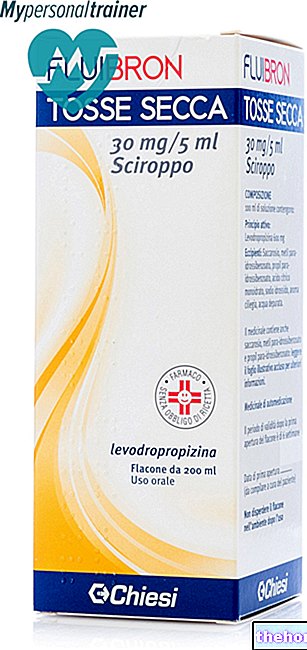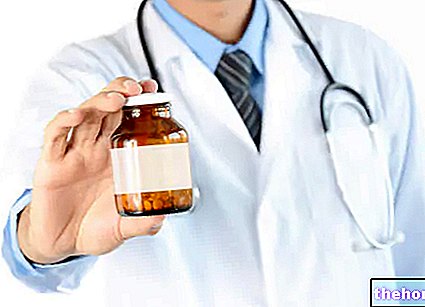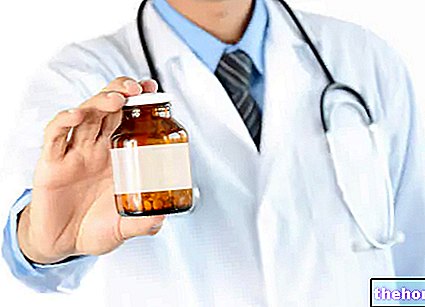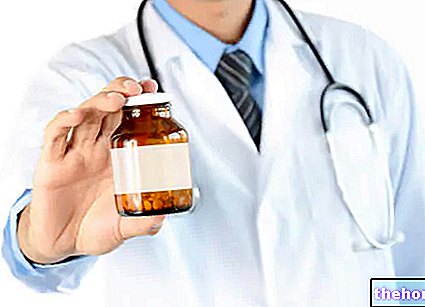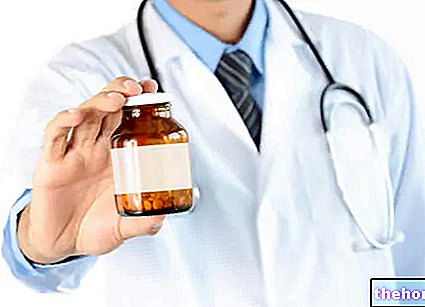Active ingredients: Testosterone (Testosterone undecanoate)
NEBID 1000 mg / 4 ml solution for injection
Indications Why is Nebid used? What is it for?
Nebid contains testosterone, a male hormone, as the active ingredient.Nebid is injected into a muscle, where it remains accumulated and from which it is gradually released over a period of time. Nebid is used to replace testosterone in adult men, for the treatment of various health problems due to testosterone deficiency (male hypogonadism). This condition must be confirmed with two separate blood testosterone measurements and must include clinical symptoms such as:
- impotence
- infertility
- poor sexual desire
- tiredness
- depressed mood
- bone loss due to low hormone levels.
Contraindications When Nebid should not be used
DO NOT use Nebid:
- if you are allergic to testosterone undecanoate or any of the other ingredients of this medicine.
- if you have androgen-dependent cancer, or suspected cancer of the prostate or mammary gland.
- if you have either a liver tumor.
Nebid is not intended for use in women.
Nebid should not be used in children and adolescents. There are no data on the use of Nebid in male patients below 18 years of age.
Precautions for use What you need to know before taking Nebido
Talk to your doctor before using Nebid if you suffer or have suffered in the past from:
- epilepsy
- heart, kidney or liver problems
- migraine
- temporary interruptions in breathing during sleep (apnea), as they can get worse
- cancer, as blood calcium levels may need to be checked regularly
- high blood pressure or if you are being treated for high blood pressure, as testosterone can cause your blood pressure to rise
- changes in blood clotting:
- bleeding disorders (i.e. haemophilia)
- thrombophilia (a "blood clotting abnormality which increases the risk of thrombosis - blood clots in the veins)
If you have severe heart, liver or kidney disease, Nebid treatment can cause serious complications in the form of water accumulation in the body, sometimes accompanied by (congestive) heart failure.
Before and during treatment, the doctor must carry out the following blood tests: testosterone levels in the blood, complete blood count.
If you have liver problems
No formal studies have been conducted in patients with hepatic impairment. You will not be prescribed Nebid if you have suffered from liver cancer (see "Do not use Nebid").
Elderly patients (65 years or older)
Your doctor does not need to change your dosage if you are over 65 (see "Medical examinations / check-ups")
Muscle development and doping test
Nebid is not indicated for promoting muscle development in healthy individuals or for improving physical performance.
Doping
For those who carry out sporting activities: the use of the drug without therapeutic necessity constitutes doping and can in any case determine positive anti-doping tests.
Medical examinations / checks
Male hormones can promote the growth of cancer of the prostate and enlarged prostate gland (benign prostatic hypertrophy). Before injecting Nebid, your doctor will examine you to make sure you do not have prostate cancer.
Your doctor will check your prostate and mammary glands regularly, especially if you are elderly. He will also give you regular blood tests.
Following the use of hormonal substances such as androgens, the onset of benign (non-cancerous) and malignant (cancerous) liver tumors has been observed.
Interactions Which drugs or foods can modify the effect of Nebid
Tell your doctor or pharmacist if you are taking or have recently taken or might take any other medicines, including medicines obtained without a prescription.
Your doctor may need to adjust your dose if you are using any of the following medicines:
- the ACTH hormone or corticosteroids (used to treat various conditions, such as rheumatism, arthritis, allergies and asthma): Nebid may increase the risk of water retention, especially if the heart and liver are not functioning well
- blood thinning tablets (coumarin derivatives, oral anticoagulants) as this can increase the risk of bleeding. Your doctor will check the dosage.
- Medicines used to treat diabetes. The dosage of your medicine may need to be changed to lower your blood sugar. Like other androgens, testosterone can enhance the effect of insulin.
Please be sure to tell your doctor if you have a bleeding disorder, as it is important for your doctor to know this before deciding to inject Nebid.
Nebid may also affect the results of certain laboratory tests (e.g. thyroid tests). Tell the doctor or laboratory staff that you are using Nebid.
Warnings It is important to know that:
Pregnancy and breastfeeding
Nebid is not indicated for use in women and the medicinal product should not be used during pregnancy or breastfeeding.
Fertility
Treatment with high-dose testosterone preparations can usually reversibly block or reduce sperm production (see also "Side Effects").
Driving and using machines
Nebid has no known effects on the ability to drive or use machines.
Dose, Method and Time of Administration How to use Nebid: Posology
Your doctor will inject Nebid (1 ampoule / vial) very slowly into a muscle. You will be given an injection every 10-14 weeks. This frequency allows you to maintain sufficient testosterone levels without leading to a buildup of testosterone in your blood.
Nebid must be strictly administered by intramuscular injection. Particular care will be taken to "avoid injecting the medicine into a blood vessel (see" Notes on handling the One-Point Cut (OPC) vial ").
Start of treatment
Before starting treatment, and in its early stages, your doctor will measure your testosterone levels in your blood. Your doctor will be able to give you the second injection after only six weeks, in order to quickly reach the required testosterone level. This will depend on your symptoms and initial testosterone levels.
Maintenance of Nebid levels during treatment
The interval between injections should always be between 10 and 14 weeks, as recommended.
Your doctor will regularly measure your testosterone levels at the end of each injection to make sure they are correct. If the values found are too low, the doctor may decide to increase the frequency of the injections. If, on the other hand, the values are high, the doctor may decide to decrease the frequency of the injections. Do not miss your injection appointments, otherwise it will not be possible to maintain optimal testosterone levels.
If you think the effect of Nebid is too strong or too weak, talk to your doctor.
Overdose What to do if you have taken too much Nebid
Symptoms of overdosing of Nebid are:
- irritability
- nervousness
- weight gain
- prolonged or frequent erections Tell your doctor if you experience any of these symptoms.
The doctor will thin the injections or stop the treatment.
Side Effects What are the side effects of Nebid
Like all medicines, this medicine can cause side effects, although not everybody gets them.
The most common side effects are acne and pain where the injection is given.
Common side effects (may affect up to 1 in 10 patients):
- abnormally high levels of red blood cells
- weight gain
- hot flashes
- acne
- enlarged prostate and associated disorders
- different reactions in the area where the injection was given (eg pain, bruising or irritation)
Uncommon side effects (may affect up to 1 in 100 patients):
- allergic reaction
- increased appetite, changes in some blood tests (eg increased sugar or fat in the blood)
- depression, emotional disturbances, insomnia, restlessness, aggression, irritability
- headache, migraine, tremor
- cardiovascular disorders, high blood pressure, dizziness
- bronchitis, sinusitis, cough, breathlessness, snoring, voice changes
- diarrhea, nausea
- changes in liver function tests
- hair loss, various skin reactions (e.g. itching, redness or dry skin)
- joint pain, pain in extremity, muscle problems (e.g. spasm, pain or stiffness), or an increase in blood creatine phosphokinase
- urinary tract disorders (e.g. decreased urine flow, urinary retention, need to urinate at night)
- prostate disorders (e.g. intraepithelial neoplasia of the prostate, hardening or inflammation of the prostate), changes in sex drive, pain in the testicles, painful hardening or enlargement of the breasts, increased levels of male and female hormones
- tiredness, general feeling of weakness, excessive sweating, night sweats
Rare side effects (may affect up to 1 in 1000 patients):
- Nebid, which is an oily liquid, can reach the lungs (pulmonary microembolism of oily solutions) and this, in rare cases, can give rise to signs and symptoms such as cough, dyspnoea, general malaise, excessive sweating, chest pain, dizziness, tingling or fainting. These reactions can occur during or shortly after the injection and are reversible.
Cases of suspected anaphylactic reaction have been reported after Nebid injection
In addition to those listed above, the following side effects have been reported following treatment with testosterone-containing preparations: nervousness, hostility, short interruptions in breathing during sleep, various skin reactions including dandruff and oily skin, increased hair, erections more frequent and very rare cases of yellowing of the skin and eyes (jaundice).
Commonly, treatment with high-dose testosterone preparations interrupts or reduces sperm production, although this returns to normal after stopping treatment. Testosterone replacement therapy of impaired testicular function (hypogonadism) may, in cases rare, persistent and painful erections (priapism) The administration of testosterone in high doses or for prolonged periods can occasionally give rise to more frequent manifestations of water retention and edema (swelling due to fluid retention).
A common risk of increased red blood cell counts, hematocrit (percentage of red blood cells in the blood) and hemoglobin (the oxygen-carrying component of red blood cells) has been observed in general for testosterone-containing products. through periodic blood tests.
Reporting of side effects
If you get any side effects, talk to your doctor or pharmacist. This includes any possible side effects not listed in this leaflet. You can also report side effects directly via the national reporting system at “www.agenziafarmaco.gov.it/it/responsabili.” By reporting side effects you can help provide more information on the safety of this medicine.
Expiry and Retention
Keep this medicine out of the sight and reach of children.
This medicinal product does not require any special storage conditions.
Do not use this medicine after the expiry date which is stated on the carton and label after "EXP". The expiry date refers to the last day of that month.
Do not throw any medicines via wastewater or household waste. Ask your pharmacist how to throw away medicines you no longer use. This will help protect the environment.
Other Information
What Nebid contains
The active ingredient is testosterone undecanoate 250 mg / ml (corresponding to 157.9 mg of testosterone). One ampoule / vial contains 1000 mg of testosterone undecanoate (corresponding to 631.5 mg of testosterone).
The other ingredients are benzyl benzoate and refined castor oil.
What Nebid looks like and contents of the pack
Nebid is a clear, yellowish oily liquid. The package contains:
1 brown glass vial / 1 brown glass vial containing 4 ml of solution for injection.
Source Package Leaflet: AIFA (Italian Medicines Agency). Content published in January 2016. The information present may not be up-to-date.
To have access to the most up-to-date version, it is advisable to access the AIFA (Italian Medicines Agency) website. Disclaimer and useful information.
01.0 NAME OF THE MEDICINAL PRODUCT
NEBID 1000 MG / 4 ML SOLUTION FOR INJECTION
02.0 QUALITATIVE AND QUANTITATIVE COMPOSITION
Each ml of solution for injection contains 250 mg of testosterone undecanoate, corresponding to 157.9 mg of testosterone.
Each 4 ml ampoule / vial of solution for injection contains 1000 mg of testosterone undecanoate corresponding to 631.5 mg of testosterone.
For the full list of excipients, see section 6.1.
03.0 PHARMACEUTICAL FORM
Injectable solution.
Clear, yellowish oily solution.
04.0 CLINICAL INFORMATION
04.1 Therapeutic indications
Testosterone replacement therapy for male hypogonadism, when testosterone deficiency has been confirmed by clinical picture and biochemical analysis (see section 4.4).
04.2 Posology and method of administration
Dosage
One vial / vial of Nebid (corresponding to 1000 mg of testosterone undecanoate) is injected every 10-14 weeks. Injections given with this frequency are able to maintain sufficient levels of testosterone, without causing buildup.
Start of treatment
It is recommended that serum testosterone levels be measured prior to initiation and in the initial phase of treatment. Depending on serum testosterone levels and clinical symptoms, the first interval between injections may be shortened to a minimum of 6 weeks compared to "Recommended interval of 10-14 weeks for maintenance. Sufficient steady-state testosterone levels can be achieved more rapidly with this loading dose.
Maintenance and personalization of the treatment
The interval between injections should be within the recommended range of 10-14 weeks. Careful monitoring of serum testosterone levels is required during maintenance therapy. It is recommended that serum testosterone levels be measured regularly. Measurements should be made. at the end of the interval between one injection and the next, together with the evaluation of clinical symptoms. Serum levels should not exceed the lower third of the normal range. Serum levels below normal indicate the need to reduce this range. In case of elevated serum levels, the possibility of extending the interval between injections.
Special populations
Pediatric population
Nebid is not indicated for children and adolescents and has not been clinically evaluated in male patients below 18 years of age (see section 4.4).
Elderly patients
There are no data indicating the need for dosage adjustment in elderly patients (see section 4.4).
Patients with impaired hepatic function
No formal studies have been conducted in patients with hepatic impairment. The use of Nebid is contraindicated in men with present or previous liver tumors (see section 4.3).
Patients with impaired renal function
No formal studies have been conducted in patients with impaired renal function.
Method of administration
For intramuscular use.
The injections should be given very slowly (over two minutes). Nebid must be injected strictly intramuscularly. Pay attention to inject Nebid deeply into the gluteal site observing the normal precautions for intramuscular administration. Particular care should be taken to avoid intravascular injection (see section 4.4 "Administration"). The contents of a vial / vial should be injected intramuscularly immediately after opening. (For the vial: see section 6.6 for instructions on how to open the vial safely).
04.3 Contraindications
The use of Nebid is contraindicated in men with:
• androgen-dependent cancer of the prostate or male mammary gland
• present or previous liver tumors
• hypersensitivity to the active substance or to any of the excipients (listed in section 6.1).
The use of Nebid is contraindicated in women.
04.4 Special warnings and appropriate precautions for use
The use of Nebid in children and adolescents is not recommended.
Nebid should only be administered in case of ascertained hypogonadism (hypergonadotropic and hypogonadotropic) and after excluding, before the start of treatment, other aetiologies responsible for the symptoms. Testosterone deficiency must be clearly demonstrated by the clinical picture (regression of secondary sexual characteristics changes in body structure, asthenia, decreased libido, erectile dysfunction, etc.) and confirmed by two separate measurements of testosterone levels in the blood.
Elderly population
There is limited experience on the safety and efficacy of the use of Nebid in patients over 65 years of age. There is currently no agreement on age-specific reference testosterone values. However, it must be considered that serum testosterone levels decrease physiologically with increasing age.
Medical examinations and laboratory investigations
Medical exams
Before starting testosterone therapy, all patients must undergo a thorough examination to rule out the risk of pre-existing prostate cancer. Patients taking testosteronic therapy must undergo careful and regular monitoring of the prostate gland (rectal exploration and determination of serum PSA) and breasts, according to the recommended methods, at least once a year and twice a year for elderly patients and those at risk (those with clinical or familial factors). Local guidelines for monitoring the safety of use in testosterone replacement therapy should be considered.
Lab test
Testosterone levels should be monitored at baseline and at regular intervals during treatment. Physicians should adjust the dose on an individual basis from patient to patient to ensure maintenance of eugonadal testosterone levels.
In patients receiving long-term androgen therapy, the following laboratory parameters should also be monitored at regular intervals: hemoglobin and hematocrit, liver function parameters and lipid profile (see section 4.8).
Due to the variability of laboratory results, all tests for the determination of testosterone must be performed in the same laboratory.
Tumors
Androgens can accelerate the progression of subclinical prostate cancer and benign prostatic hyperplasia.
Nebid should be used with caution in cancer patients at risk of hypercalcaemia (and associated hypercalciuria) due to bone metastases. Regular monitoring of serum calcium concentration is advisable in these patients.
Cases of benign and malignant liver tumors have been reported in users of hormonal substances such as androgenic compounds. If severe upper abdominal discomfort, liver enlargement or signs of intra-abdominal haemorrhage occur in men taking Nebido, the possibility of liver cancer should be considered in the differential diagnosis.
Heart, liver or kidney failure
In patients suffering from severe cardiac, hepatic or renal insufficiency or ischemic heart disease, treatment with testosterone can induce serious complications, characterized by edema with or without congestive heart failure. In this case, the treatment must be stopped immediately.
Hepatic or renal insufficiency
No studies have been conducted to demonstrate the efficacy and safety of the drug in patients with impaired renal or hepatic function, therefore testosterone replacement therapy should be used with caution in these patients.
Heart failure
Caution should be used in patients predisposed to edema, for example in cases of severe cardiac, hepatic, or renal insufficiency or ischemic heart disease, since treatment with androgens can cause increased retention of sodium and water. In case of severe complications characterized by edema with or without congestive heart failure, treatment should be stopped immediately (see section 4.8).
Testosterone can cause an increase in blood pressure and Nebid should be used with caution in hypertensive individuals.
Coagulation disorders
As a general rule, the limitations on the use of intramuscular injections in patients with acquired or hereditary bleeding problems must always be respected.
Testosterone and its derivatives have been reported to increase the activity of coumarin derivatives as oral anticoagulants (see also section 4.5).
Testosterone should be used with caution in patients with thrombophilia, as there have been post-marketing studies and spontaneous reports of thrombotic events in these patients during testosterone therapy.
Other conditions
Nebid should be used with caution in patients with epilepsy and migraine, as these conditions can be aggravated.
Increased insulin sensitivity may occur in androgen-treated patients who reach normal plasma testosterone concentrations following replacement therapy.
Certain clinical signs such as irritability, nervousness, weight gain, prolonged or frequent erections may indicate excessive exposure to androgens resulting in a need for dosage adjustment.
Preexisting sleep apnea may be potentiated.
Athletes treated with testosterone as a substitute therapy in primary and secondary male hypogonadism should be informed that the medicinal product contains an active ingredient which may result in positive results in doping tests.
Androgens are not indicated for increasing muscle development in healthy individuals or for enhancing physical performance.
The use of Nebid should be permanently discontinued if, during treatment with the recommended dosage, symptoms of excessive exposure to androgens persist or reappear.
Administration
Like all oily solutions, Nebid must be injected strictly intramuscularly and very slowly (over two minutes). The formation of pulmonary microemboli of oily solutions can, in rare cases, give rise to signs and symptoms such as cough, dyspnoea, malaise, hyperhidrosis, chest pain, dizziness, paraesthesia or syncope. These reactions may occur during or shortly after the injection and are reversible. The patient should therefore be observed during and immediately after each injection in order to allow early recognition of possible signs and symptoms of pulmonary oily microembolism. Treatment usually it is supportive, consisting, for example, in the administration of oxygen.
Cases of suspected anaphylactic reaction have been reported after Nebid injection.
04.5 Interactions with other medicinal products and other forms of interaction
Oral anticoagulants
Testosterone and its derivatives have been observed to increase the activity of coumarin derivatives, oral anticoagulants. Patients taking oral anticoagulants require close monitoring, especially at the beginning or at the end of androgen therapy. Intensified monitoring of prothrombin time and frequent INR determinations are recommended.
Other interactions
Concomitant administration of testosterone and ACTH or corticosteroids may increase the formation of edema, therefore these active ingredients should be administered with caution, particularly in patients with heart or liver disease or in patients with a predisposition to edema.
Interactions with laboratory tests: Androgens may decrease thyroxine binding globulin levels thereby decreasing total serum T4 levels and increasing resin T3 and T4 uptake. However, the levels of free thyroid hormone remain unchanged and no clinical signs of thyroid dysfunction are observed.
04.6 Pregnancy and breastfeeding
Fertility
Testosterone replacement therapy can reversibly reduce spermatogenesis (see sections 4.8 and 5.3).
Pregnancy and breastfeeding
Nebid is not indicated for use in women and the medicinal product should not be used during pregnancy or breastfeeding (see section 4.3).
04.7 Effects on ability to drive and use machines
Nebid does not affect the ability to drive or use machines.
04.8 Undesirable effects
Summary of the safety profile
For undesirable effects associated with the use of androgens, see also section 4.4.
The most frequently reported side effects during treatment with Nebido are acne and pain at the injection site.
Pulmonary microembolism of oily solutions can, in rare cases, result in signs and symptoms such as cough, dyspnoea, malaise, hyperhidrosis, chest pain, dizziness, paraesthesia or syncope. These reactions may occur during or shortly after the injection and are reversible. Cases of suspected pulmonary oily microembolism, in the opinion of the reporting company or physician, have been reported rarely in clinical trials (in ≥ 1 / 10,000,
Cases of suspected anaphylactic reaction have been reported after Nebid injection.
Androgens can accelerate the progression of subclinical prostate cancer and benign prostatic hyperplasia.
Adverse drug reactions classified by MedDRA system organ system (MedDRA SOCs) are presented in the following table (Table 1). Frequencies are based on clinical trial data and defined as common (≥ 1/100,
Table of adverse reactions
Table 1: Relative frequency of men with adverse reactions, classified according to MedDRA SOC, from pooled data from 6 clinical studies, N = 422 (100.0%) of which N = 302 hypogonadal patients treated with IM injections of testosterone undecanoate 250 mg / ml from 4 ml and N = 120 treated with i.m. injection of testosterone undecanoate 250 mg / ml by 3 ml
* The respective frequency has been observed in relation to the use of testosterone-containing products.
** Frequency is based on the number of injections
The list contains the MedDRA term (version 11.0) that best describes a given adverse reaction. Related symptoms or conditions are not listed but should be considered.
1 Rash, including papular rash
2 Muscle disorders: Muscle spasm, Muscle tear and Myalgia
3 Different types of injection site reactions: Injection site pain, Injection site discomfort, Injection site pruritus, Injection site erythema, Injection site hematoma, Injection site irritation "injection, Injection site reaction."
4Hyperhidrosis: Hyperhidrosis and night sweats
Description of selected adverse reactions
Pulmonary microembolism of oily solutions can, in rare cases, give rise to signs and symptoms such as cough, dyspnoea, malaise, hyperhidrosis, chest pain, dizziness, paraesthesia or syncope. These reactions may occur during or shortly after the injection and are reversible. Cases of suspected pulmonary oily microembolism, in the opinion of the reporting company or physician, have been reported rarely in clinical trials (in ≥ 1 / 10,000,
In addition to those mentioned above, the following adverse reactions have been reported during treatment with testosterone-containing preparations: nervousness, hostility, sleep apnea, various skin reactions including seborrhea, hypertrichosis, increased frequency of erections and, in very rare cases , jaundice.
Commonly, therapy with high-dose testosterone preparations reversibly interrupts or reduces spermatogenesis and results in a reduction in the size of the testes; testosterone replacement therapy of hypogonadism can cause, in rare cases, persistent and painful erections (priapism). The administration of testosterone in high doses or for prolonged periods can occasionally give rise to more frequent manifestations of water retention and edema.
Reporting of suspected adverse reactions
Reporting of suspected adverse reactions occurring after authorization of the medicinal product is important as it allows continuous monitoring of the benefit / risk balance of the medicinal product. Healthcare professionals are asked to report any suspected adverse reactions via the national reporting system. "address" www.agenziafarmaco.gov.it/it/responsabili ".
04.9 Overdose
There is no need to take any special therapeutic measures following overdose, other than interrupting drug therapy or reducing the dosage.
05.0 PHARMACOLOGICAL PROPERTIES
05.1 Pharmacodynamic properties
Pharmacotherapeutic group: androgens, 3-oxoandrostene derivatives
ATC code: G03B-A03
Testosterone undecanoate is an ester of the naturally occurring androgen, testosterone. The active form, testosterone, is formed by elimination of the side chain.
Testosterone is the most important male androgen, synthesized mainly in the testes and, to a lesser extent, in the adrenal cortex.
Testosterone is responsible for the expression of male characteristics during fetal development, early childhood and puberty and therefore for the preservation of the male phenotype and androgen-dependent functions (eg spermatogenesis, accessory sex glands). , e.g., skin, muscle, skeleton, kidney, liver, bone marrow, and central nervous system.
Depending on the target organ, testosterone activity is predominantly androgenic (eg prostate, seminal vesicles, epididymis) or protein-anabolic (muscle, bone, hematopoiesis, kidney, liver).
The effects of testosterone in some organs arise after peripheral conversion of testosterone to estradiol, which binds to estrogen receptors in the nucleus of target cells, such as pituitary, fat, brain and bone cells and Leydig cells of the testis.
05.2 Pharmacokinetic properties
Absorption
Nebid is a slow-release "depot" pharmaceutical form of testosterone undecanoate for intramuscular administration, which avoids the first pass effect. Following intramuscular injection of testosterone undecanoate in the form of an oily solution, the compound is gradually released. and almost completely cleaved by serum esterases into testosterone and undecanoic acid. One day after administration, an increase in serum testosterone levels above basal values can be observed.
Equilibrium conditions (Steady-state)
Following the first intramuscular injection of 1000 mg testosterone undecanoate in hypogonadal male patients, mean Cmax values of 38 nmol / l (11 ng / ml) were obtained after 7 days. The second dose was administered 6 weeks after the first injection and maximum testosterone concentrations of approximately 50 nmol / l (15 ng / ml) were achieved. A constant dosing interval of 10 weeks was maintained over the 3 subsequent administrations and equilibrium conditions were achieved between the third and fifth administration. Mean steady-state testosterone Cmax and Cmin values were 37 (11 ng / mL) and 16 nmol / L (5 ng / mL), respectively. The median intra and interindividual variability (coefficient of variation,%) of the Cmin values was 22% (range: 9-28%) and 34% (range: 25-48%), respectively.
Distribution
In the serum of male patients, approximately 98% of circulating testosterone binds to sex hormone binding globulin (SHBG) and albumin. Only the free fraction of testosterone is considered biologically active. Following intravenous infusion of testosterone in male patients. In the elderly, a "testosterone elimination half-life of approximately one" was observed and an apparent volume of distribution of approximately 1.0 L / kg was observed.
Biotransformation
Testosterone generated by ester cleavage from testosterone undecanoate is metabolized and excreted in the same way as endogenous testosterone. Undecanoic acid is metabolized by β-oxidation in the same way as other aliphatic carboxylic acids. The main active metabolites of testosterone are estradiol and dihydrotestosterone.
Elimination
Testosterone is extensively metabolised in the liver and extra-hepatic. Following administration of radiolabelled testosterone, about 90% of the radioactivity appears in the urine in the form of glucuronic and sulfuric acid conjugates, while 6% appears in the faeces, after being subjected to enteropathic circulation. Urinary products include androsterone and Ethiocolanolone: Following intramuscular administration of this "depot" formulation, the release rate is characterized by a "half-life of 90 ± 40 days.
05.3 Preclinical safety data
Toxicological studies did not reveal any effects other than those explainable on the basis of the hormonal profile of Nebid.
Testosterone was found to be non-mutagenic in vitro using the mutation reversion model (Ames test) or hamster ovary cells. In studies in laboratory animals, a relationship between androgenic treatment and certain types of cancer was found. Experimental data in rats have shown an increased incidence of prostate cancer after treatment with testosterone.
Sex hormones are known to favor the development of some types of cancer induced by known carcinogens. The clinical relevance of this last observation is unknown.
Fertility studies in rodents and primates have shown that testosterone treatment can impair fertility by suppressing spermatogenesis in a dose-dependent manner.
06.0 PHARMACEUTICAL INFORMATION
06.1 Excipients
Benzyl benzoate
Refined castor oil
06.2 Incompatibility
In the absence of compatibility studies, the medicinal product must not be mixed with other products.
06.3 Period of validity
5 years
The medicine should be used immediately after first opening
06.4 Special precautions for storage
This medicine does not require any special storage conditions.
06.5 Nature of the immediate packaging and contents of the package
Vial
5 ml brown glass (type I) vials, containing 4 ml of solution.
Packaging: 1 vial of 4 ml
Vial
6 ml brown (type I) glass vial with a gray bromobutyl stopper (ETFE liner) for injection and a rimmed cap, containing 4 ml of solution.
Packaging: 1 vial of 4 ml
06.6 Instructions for use and handling
The solution for injection should be checked visually before use; only clear solutions without suspended particles should be used.
The medicine is for single use only; any unused solution must be disposed of in compliance with local regulations in force.
Vial
Notes on handling the One-Point Cut (OPC) vial:
Below the colored dot, the vial has a pre-cut, which eliminates the need to use a hacksaw to open it. Before opening, make sure that any solution present in the upper part of the vial has fallen to the bottom. Use both hands to open; holding the lower part of the vial with one hand, peel off the upper part with the other, in the opposite direction to the colored dot.
Vial
The vial is for single use only. The contents of the vial should be injected intramuscularly immediately after aspiration into the syringe. After removing the plastic cap, do not remove the metal ring or the screw cap.
07.0 MARKETING AUTHORIZATION HOLDER
Bayer S.p.A. - Viale Certosa, 130 - 20156 Milan
08.0 MARKETING AUTHORIZATION NUMBER
1 vial of 4 ml AIC 037051012
1 vial of 4 ml AIC 037051024
09.0 DATE OF FIRST AUTHORIZATION OR RENEWAL OF THE AUTHORIZATION
Date of first authorization: 25 October 2006
Date of most recent renewal: November 25, 2008
10.0 DATE OF REVISION OF THE TEXT
11/2016

